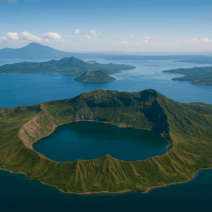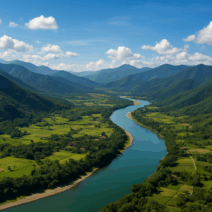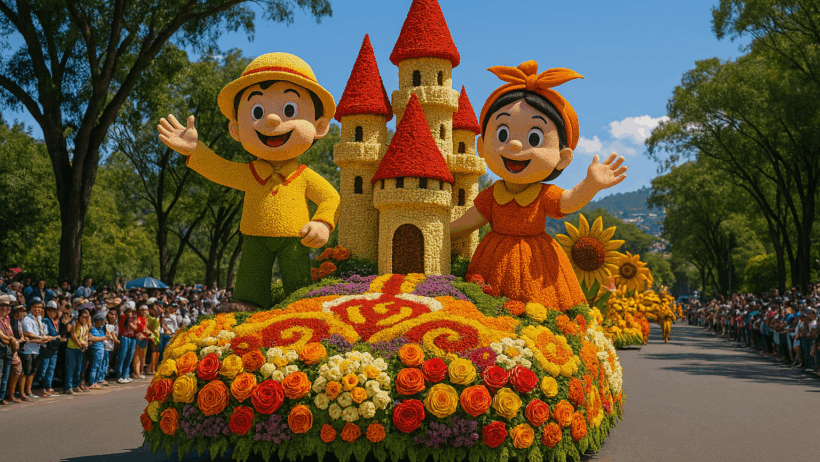QUICK SUMMARY
A vibrant celebration of flowers, culture, and creativity in Baguio City, marked by street dancing, floral floats, and a month-long lineup of festive events.
Introduction
Every February, Baguio City transforms into a spectacular garden of color and creativity during the Panagbenga Festival. Known as the “Season of Blooming,” this annual celebration honors the city’s resilience, its flourishing flower industry, and the cultural identity of the Cordillera region. What began as a tribute to recovery after the 1990 earthquake has grown into one of the Philippines’ grandest festivals, drawing visitors from all over the world.
Panagbenga, from the Kankanaey term meaning “to bloom,” captures the spirit of renewal. It celebrates not only flowers but also the artistry of the people, the rhythms of indigenous dances, and the unity of a community that continues to grow and thrive. This travel guide explores what makes the Panagbenga Festival unforgettable and why it remains one of the country’s most anticipated events.
The Meaning Behind Panagbenga
Unlike many Philippine festivals rooted in religious traditions, Panagbenga centers on the natural beauty and cultural heritage of the Cordilleras. The festival symbolizes rebirth, growth, and gratitude. Its floral displays represent Baguio’s cool climate and thriving flower farms, while the performances reflect indigenous history and artistry.
Panagbenga is also a testament to community solidarity. Residents, schools, artisans, and organizations participate in the festivities, contributing to a celebration that brings the entire city to life.
The Grand Float Parade: The Festival’s Crown Jewel
The most iconic highlight of Panagbenga is the Grand Float Parade, where enormous floats made entirely of flowers move gracefully along the city’s main streets. These floats are covered in vibrant blooms — roses, chrysanthemums, sunflowers, and local highland flowers — in intricate designs that depict cultural stories, fantasy characters, landscapes, and whimsical creations.
The artistry is breathtaking. Each float represents weeks of planning and thousands of flowers meticulously arranged to form patterns, sculptures, and animated scenes. As they glide down the parade route, spectators cheer, photograph, and admire the craftsmanship that has made Panagbenga famous worldwide.
Street Dancing: Rhythms of the Cordilleras
Another central feature is the street dancing competition, where performers — often students — dance to the beat of Cordillera-inspired music. Their choreography tells tales of planting, harvesting, mountain rituals, and tribal traditions. Costumes bloom with color, echoing flower petals and indigenous patterns woven into the attire.
Unlike many modern street dances, Panagbenga’s are characterized by grace, synchronized formations, and the influence of highland rhythms. The performers’ energy brings the streets alive, creating a joyous celebration of cultural pride.
Session Road in Bloom
For one week during the festival, Session Road transforms into a lively walkway filled with:
- Flower installations
- Handicraft stalls
- Art displays
- Food booths
- Local products and delicacies
This event is called Session Road in Bloom, and it highlights small businesses, local artisans, and the creativity of Baguio’s entrepreneurial community. Visitors can stroll through the decorated street, enjoy local snacks, or shop for souvenirs that reflect the city’s culture.
Market Encounters and Garden Exhibits
Baguio’s horticultural heritage is on display during the festival. Garden-themed installations and landscaping exhibits line various parts of the city, featuring ornamental plants, bonsai arrangements, and themed mini-gardens created by landscape artists.
Panagbenga also celebrates the region’s farmers and flower growers by providing markets where visitors can buy fresh blooms and local produce. The event showcases Baguio’s ties to agriculture and the natural environment that sustains the festival.
Educational and Cultural Activities
Throughout the month-long celebration, Baguio hosts a diverse range of activities such as:
- Cultural performances
- Art workshops
- Flower arrangement competitions
- Parades featuring elementary and high school performers
- Community-led concerts
- Exhibits on Cordillera heritage
These events strengthen cultural awareness and allow younger generations to participate actively in preserving local traditions.
Why Panagbenga Is Unique
Panagbenga stands out among Philippine festivals for several reasons:
- It honors nature, especially flowers that thrive in the city’s cool climate.
- It celebrates Cordillera culture, reflected in music, costumes, and performances.
- It boosts local tourism and economy, supporting artisans, businesses, and farmers.
- It symbolizes healing and resilience, rooted in the city’s recovery after the 1990 earthquake.
- It is month-long, offering a wide variety of events that cater to all ages.
These distinct qualities make Panagbenga not just a festival but an experience—a blend of beauty, joy, and cultural pride.
When to Visit the Panagbenga Festival
Panagbenga typically runs from early February to early March. The most awaited events—street dancing and the Grand Float Parade—usually occur during the last weekend of February. This period draws the largest crowds, so travelers are advised to book accommodations early.
The cool climate enhances the experience, with clear skies providing perfect conditions for outdoor festivities.
Tips for Enjoying Panagbenga
To fully appreciate the festival, travelers should:
- Arrive early to secure good viewing spots for the parades
- Wear comfortable shoes for long walks
- Bring layered clothing due to the cool temperature
- Expect large crowds during the final parade weekend
- Explore nearby gardens and parks like Burnham Park, Wright Park, and Botanical Garden
Panagbenga is a festival best enjoyed with patience and enthusiasm, as its energy comes from the collective excitement of locals and visitors.
Why You Should Experience Panagbenga
Panagbenga is one of the Philippines’ most beautiful celebrations—a dazzling display of creativity, nature, and cultural unity. It highlights the people of Baguio and the Cordilleras, whose artistry and traditions shape every performance and float.
For travelers seeking a festival filled with color, movement, and meaning, Panagbenga is truly unforgettable. It is a celebration that uplifts the spirit, honors the land, and showcases the best of northern Philippine culture.








